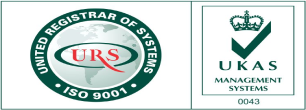
NX – embedded CFD Simulation
Experience streamlined workflows, faster results, and increased productivity with FloEFD.
FloEFD for Siemens NX is an easy-to-use, fast and accurate CFD analysis tool that is fully embedded in Siemens NX. It enables engineers to frontload simulation by moving CFD simulation early into the design process; thus, enabling design engineers to examine and evaluate design options earlier to obtain optimized product performance and reliability.
Extend the power of Siemens NX to optimize product performance and reliability for fluid flow and heat transfer effects. With its unique combination of an intuitive interface, and fast as well as accurate technology, Simcenter FLOEFD for NX can be inserted into your current design process without any disruption, streamlining your workflow and improving productivity by 40x.
NX CAD Embedded
CAD-embedded simulation enables engineers to conduct analysis in the same user environment as design. Therefore, engineers can use the latest CAD geometry for analysis to conduct multiple design studies and evaluate how the modifications influence the performance of the design without the hassle of data translation.
Parametric Study and Design Comparison Functionality
The compare configuration and parametric study capability inside FloEFD enable engineers to understand the influence of changes in the geometry or boundary conditions on the results. Users can evaluate the design envelope by assessing results by numerical values, by graphs and by visual images and animations and thereby compare a wide range of project permutations.
Fast and Automated Meshing Technology with SmartCells
FloEFD uses meshing technology which is recognized as the most efficient framework for simulating fluid flows, heat and mass transfer. In addition, the meshing process can be automated easily for even the most complex CAD geometries with the aid of SmartCells technology.
SmartCells are unique technology that combines robust Cartesian meshing with highly efficient analytical or semi-empirical solver models; thus providing high levels of simulation accuracy with a fewer number of mesh cells than in traditional CFD. SmartCells typically reduce the manual time spent by traditional CFD tool users in meshing even complex geometries by an order of magnitude on average thus dramatically reducing a historical bottleneck to CFD user productivity.
LED and Lighting Thermal Simulation Capabilities
FloEFD’s LED Module offers a unique range of capabilities required for various lighting applications:
- Its Monte Carlo radiation model is best suited for thermal radiation predictions in lighting applications where lenses or reflectors can cause hot spots in focal points from the light source (solar or man-made).
- A new band-less Monte Carlo model for lighting and radiation allows users to dramatically decrease the time required for defining wave-length dependent properties while increasing the simulation accuracy of spectral characteristics.
- Its new water film model enables simulation of surface condensation, evaporation, icing and de-icing exploration such as condensation on the inner surfaces of automobile headlights.
- Combined thermal and photometric model for LEDs based on T3Ster measurements of actual off-the-shelf LEDs can yield correct power and temperature predictions and “hot lumen” output.
- Definition of radiation spectrum and setting intensity of radiation can now be dependent on the angle. With that data defined, FloEFD now automatically applies the calculated radiant flux on top of the LED.
- Easy ray visualization helps to find sources for radiation hot spots on other parts of the luminaire.
- A water absorption model enables the simulation of absorption of water into the plastic housing of the luminaire and later releases it under the right environmental conditions.
Instinctive User Experience
FloEFD for NX features an easy-to-use GUI with considerable intelligent automation built-in as standard:
- Operate within the NX graphical user environment.
- Powerful analysis wizard guides users through the problem set-up.
- The interface uses engineering terms instead of technical jargon, therefore, users can focus on solving flow problems as opposed to figuring out how to use the software.
- Real-time feedback about the solution progress such as convergence and monitor point values.
- Engineering outputs appear in both a timely and intuitive manner including reports in Microsoft Excel and Word.


